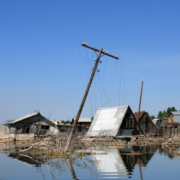Archive | Finance sector development RSS feed for this section
Climate change, Finance sector development
 Climate change, Finance sector development
Climate change, Finance sector development
 Climate change, Finance sector development
Climate change, Finance sector development
 Climate change, Finance sector development
Climate change, Finance sector development
 Finance sector development, Information and Communications Technology
Finance sector development, Information and Communications Technology
 Energy, Environment, Finance sector development
Energy, Environment, Finance sector development
 Economics, Finance sector development
Economics, Finance sector development
 Finance sector development, Governance and public sector management
Finance sector development, Governance and public sector management
 Economics, Finance sector development
Economics, Finance sector development
 Environment, Finance sector development
Environment, Finance sector development

Funding a Resilient Future: Bridging Climate Financing Gaps

Climate finance is at the forefront of the climate change discourse as a critical tool for achieving mitigation and adaptation outcomes.
How Can Policy Makers Help Strengthen Corporate Climate Disclosure to Scale Up Private Climate Finance?

Investors need better information on where to direct their investments to have the biggest impact on climate goals.
Mitigating climate-related sovereign risk to accelerate action on the climate emergency

Governments and financial authorities should implement financial sector policies to scale-up investment in climate adaptation and resilience
Asia in need of dialogue for scaling up climate transition finance

Transition finance is one of the most challenging but underdeveloped aspects of climate finance.
Digitalization for enhancing access to finance and inclusive growth

Digital finance enables more affordable and accessible financial services and other credit facilities for underserved and marginalized groups.
Asia’s clean energy investment needs and the role of blended finance

Expanding the scale of blended finance in clean energy will require innovative efforts from the international community to reform traditional development finance approaches.
Exchange rate transmission to prices in emerging Asia and the role of global shocks

Central banks in emerging Asia have helped to bolster the resilience of their economies to external shocks, but the exchange rate channel remains a key transmission mechanism of disturbances.
Bank of Japan’s unconventional monetary easing brings global recognition as a bold, innovative practitioner

Over the last decade, the Bank of Japan has become known as a bold practitioner of monetary easing.
Rising corporate market power in Asia threatens monetary policy effectiveness

Market power has been a long-standing concern for many policy makers and academic researchers as it greatly matters for economic welfare and resource allocation.
Central bank initiatives essential for developing effective sustainable finance markets

As many countries have begun to take greater climate action, central banks and financial regulators must also make greater efforts to foster more effective sustainable financial markets.


Search
Subscribe / Connect to Asia Pathways
Subjects
- Agriculture and natural resources
- Blog
- Capacity development
- Climate change
- Economics
- Education
- Energy
- Environment
- Finance sector development
- Gender
- Governance and public sector management
- Health
- Industry and trade
- Information and Communications Technology
- Infrastructure
- Miscellaneous
- Population
- Poverty
- Private sector development
- Regional cooperation and integration
- Sanitation
- Social development and protection
- Transport
- Uncategorized
- Urban development
- Video Blog
- Water
Recent Posts
- Transforming ASEAN: Advancing Regional Integration, Social Inclusion, and Environmental Sustainability
- Development of the Creative Economy in Asia and the Pacific
- Kashima City’s Great Transformation: Where Industry Meets Community
- Mechanization Driving the Future of Agriculture in Asia
- Natural Capital: Valuing Nature to Protect and Restore Ecosystem Services for Sustainable Development




Recent Comments